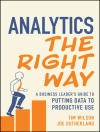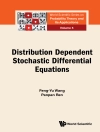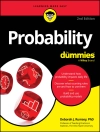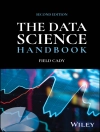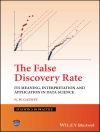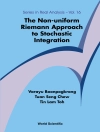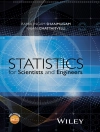At last, the first systematic guide to the growing jungle of citation indices and other bibliometric indicators.
Written with the aim of providing a complete and unbiased overview of all available statistical measures for scientific productivity, the core of this reference is an alphabetical dictionary of indices and other algorithms used to evaluate the importance and impact of researchers and their institutions. In 150 major articles, the authors describe all indices in strictly mathematical terms without passing judgement on their relative merit. From widely used measures, such as the journal impact factor or the h-index, to highly specialized indices, all indicators currently in use in the sciences and humanities are described, and their application explained. The introductory section and the appendix contain a wealth of valuable supporting information on data sources, tools and techniques for bibliometric and scientometric analysis – for individual researchers as well as their funders and publishers.
Tabela de Conteúdo
User’s Guide
Notations and symbols
Introduction
DICTIONARY
A: a ARCA index to axiomatic approaches to bibliometric indicators
B: Balanced Citation Count to byline
C: Carbon_h-factor to cyclomatic number
D: database citation potential to dynamic discounted cumulated impact
E: ECR (expected citation rate) to External Journal Impact Factor
F: Faculty Member Score to fuzzy academic performance index
G: Garfield Factor to GWD (generalized Waring distribution)
H: harmonic author count to h-type indices
I: I3 (Integrated Impact Indicator) to iteratively weighted indices
J: Jaccard-Tanimoto coefficient to Journal Paper Productivity
K: Kaur h-index to Kullback-Leibler relative entropy
L: Lagrange distance to L-W (Liberman-Wolf) bonding number
M: Mahalanobis distance to mutual entropy
N: negentropy to NWDC (Normalized Weighted Direct Citations)
O: OA (open access) to overall interactivity
P: Page Rank to PY/CY diagrams
Q: q-index to quasity
R: Ramirez-Garcia-Del Rio renormalized impact factor to Rw indicator
S: SALSA to synchronous journal diffusion factors
T: Taber c-index to TZS (total Z-score)
U: U-Class journals to utility index
V: Vantage Point to VOSViewer
W: WAI (weighted affinity index) to Wu-index
X: x-index
Y: yearly h-index to Yule-Simpson effect
Z: zero-order h-index to z test
Bibliography
Sobre o autor
Roberto Todeschini is full professor of chemometrics at the Department of Environmental Sciences of the University of Milano-Bicocca (Milano, Italy), where he constituted the Milano Chemometrics and QSAR Research Group. His main research activities concern chemometrics in all its aspects, QSAR, molecular descriptors, multicriteria decision making and software development. President of the International Academy of Mathematical Chemistry from 2008 to 2014, president of the Italian Chemometric Society and ‘ad honorem’ professor of the University of Azuay (Cuenca, Ecuador), he is author of more than 170 publications on international journals and books. The latest is ‘Molecular Descriptors for Chemoinformatics’ R. Todeschini and V. Consonni; Wiley-VCH, 2009.
Alberto Baccini is professor of Economics at the Department of Economics and Statistics of the University of Siena (Italy). He started his research activities by working on various aspects of applied economics and of the history of economic thought. He focused his attention on the history of the theory of choice under uncertainty, becoming an expert of the works of the British economist Francis Y. Edgeworth. More recently, he has been working on application of network analysis techniques to the study of scientometric data, and on topics at the boundaries between scientometrics, statistics and economics, such as the statistical properties of scientometric indicators; researchers’ productivity and research evaluation.




